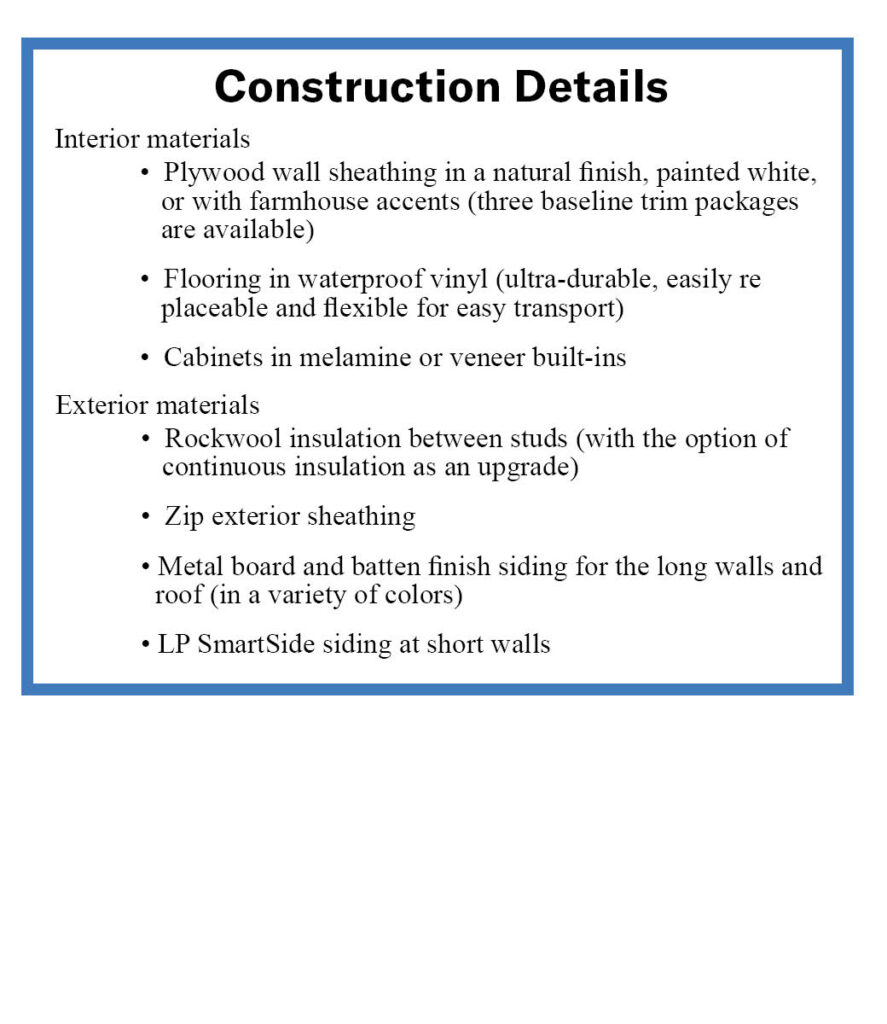What role can quality tiny homes play in builders’ and developers business? An IBS show home aims to address that question.
- The Via Home by Liv-Connected will be on display at the Pro Builder Show Village during the 2024 International Builders’ Show.
- In addition to targeting the growing tiny home market, the home includes design and technology approaches that could be of use to other modular manufacturers.
- Structural elements are manufactured on CNC machines in an automated factory. Electrical and mechanical equipment is also factory-installed.

The tiny home market has been growing in the US and around the world and seems poised for further growth. A recent survey by ComfyLiving, an online resource site for homeowners (comfyliving.net), found that 63% of millennials would consider buying a tiny house.
However, not everyone is sold on the concept. One reason for skepticism towards tiny homes is that a lot of people have questions about their quality.
New York-based Liv-Connected aims to assuage any buyer reservations. Their stated goal is to build well-designed, factory-built tiny homes that are equal in quality to the best modular homes.
The company’s Via tiny home model will be open for tours at the Pro Builder Show Village during the 2024 International Builders’ Show (IBS) in Las Vegas, Nevada. The company hopes to capitalize on growing interest in tiny homes, but they also believe that their design, construction and technology systems offer lessons that any modular manufacturer could incorporate.

Designed for Healthy Living
Liv-Connected was founded by father-and-son team Dr. Herb Rogove and Jordan Rogove. Dr. Rogove has over thirty years of experience in the medical field, while Jordan is a New York State Registered Architect and LEED accredited professional.
The Rogoves founded Liv-Connected in 2019 with the aim of finding the intersection between health care and architecture. Their homes incorporate the best practices in building science, ergonomics and aesthetics.
“All of our building systems are designed to emphasize well-being,” says Dr. Rogove. For instance large operable windows and tall ceilings to help residents maintain a positive state of mind in a small space. A fresh air system can also be installed.

Efficient Processes
To build the Via model, Liv-Connected has partnered with ATOMIC Homes and Endeavor Homes. ATOMIC’s background is building modular sets for live entertainment, while Endeavor has experience creating and operating tiny home communities. Homes are manufactured in a 100,000 sq. ft. factory in Elizabethtown, Pennsylvania.
As with every factory-built home, the construction process is more efficient than traditional on-site construction. However, the process used at Liv-Connected goes a step further. Each home is manufactured using CNC (computer numerical control) construction technology. This automated process guarantees precision-cut framing and sheathing with faster build times and reduced material waste. The technology can also be scaled for larger-quantity orders.
“Like a car assembly line, there are six stations throughout the factory, and each step is monitored with the highest quality standards, making for a very low waste process. Each home is fully inspected on the floor as it’s built,” says Jordan Rogove. In addition, all electrical, plumbing and other equipment is installed in the factory. “We deliver a fully functional home.”
Liv-Connected’s homes are framed directly onto a steel trailer, then towed to the site with a large pickup such as a Ford F-250.
The Via Home is detailed for energy efficiency. As a certified park model, the Via has been designed to exceed the ANSI A119.5+ code standards, but it also features full in-wall insulation with higher R-values than most tiny homes and its structural integrity is certified by licensed engineers. The Via can be hooked up to permanent utilities or placed on an RV pad. It depends on the site and the owner’s preference.

For Whom?
As of this writing, there are 36 Via tiny homes standing. Most are in Pennsylvania, but they’re designed to withstand all four seasons in any part of the country.
The base model has R-23 insulation on the roof and floor. Walls are insulted to R-19, but there’s an option to go higher. A vented roof assembly prevents condensation build-up, and Zip system barrier sheathing fully encloses the home from exterior elements.
“We included large, operable windows that allow air in, as well as a heat pump, which moves fresh air quickly through the small space,” says Dr. Rogove. For a healthy interior, “we can also install a fresh air recycling system as an upgrade.”

The starting price for the Via Home is $95,000. The Liv-Connected team believes it will appeal to young buyers looking for a starter home, as well as to older people who are downsizing.
“We see the Via Home as a great fit for folks looking to simplify their lives, or for anyone looking for a second home or a vacation home,” explains Jordan Rogove. “The home is also a great option for developers looking to offer long-term rentals, short-term rentals, vacation properties, glamping opportunities, or homes for purchase.”

Going to the Show
Liv-Connected is excited to present the Via Home at IBS 2024 and is looking to partner with developers (even though the company also sells directly to consumers). “The Via introduces builders to a different type of home they may not have been familiar with and allows them to understand that quality can come from this market,” concludes Dr. Rogove.
He believes that the Via Home offers the tiny home market an entry-level home with higher quality materials and a more thoughtful design aesthetic than what has been available until now. It could make reluctant consumers more willing to try living in a tiny home.


Larry Bernstein is a freelance writer based in northern New Jersey. Images courtesy Liv-Connected.

















